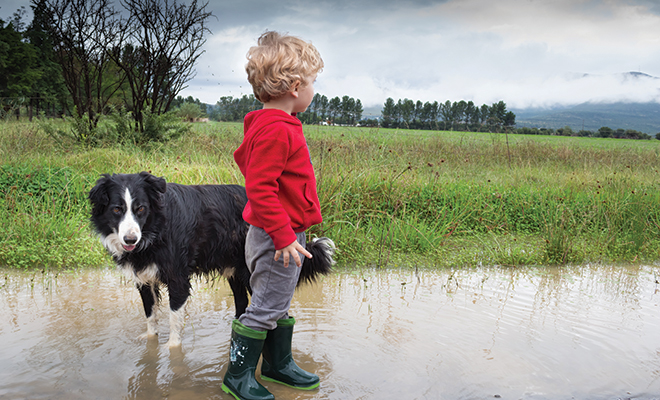
Nature’s Light Show: Understanding Lightning and Thunder
Thunder rumbles in the distance and the smell of rain fills the air. The sky illuminates with a light show of flashes that send jagged fingers of static electricity toward the ground. A storm is coming.
It’s no mystery what storms are. They are the severe-weather-related disturbances that occur during every season and in every part of the world. In the winter, storms bring blizzards and ice while summer storms disperse rain, thunder and lightning. The latter seems to be the most concern since these severe summer storms also deliver threats of hurricanes, tornadoes and floods. According to the National Weather Service, approximately 1,800 thunderstorms are occurring at any given time, resulting in about 16 million storms each year.
Because moisture and warmth are crucial to thunderstorms, it makes sense that they would occur more often in the spring and summer. Tagging along with rain and wind during these warm-weather storms is one of nature’s most breathtaking displays, lightning. It’s a natural electrical discharge accompanied by a brilliant flash of light and a loud crack of thunder that has a very short duration.
The sound of thunder and lightning happens because of an outburst that is produced by cumulonimbus clouds, a Latin word that, when divided into two parts, means to pile (cumulus) and rain cloud (nimbus). The cumulonimbus clouds, also called thunderstorm clouds, can produce gusty winds, heavy rain and sometimes hail. The combination of the rapid heating of the air by the lightning and the subsequent rapid cooling creates sound waves. These sound waves are what we call thunder. There can never be thunder without lightning.
Sometimes called “nature’s light show,” this natural phenomenon may be a visual display of force and beauty, but it also comes with an element of danger. The spark from lightning can reach over five miles in height, raise the temperature of the air by as much as 50,000 degrees Fahrenheit, and contain a hundred million electrical volts.
Many kids get frightened when they hear the rumbling sounds outside and realize that there is a storm brewing. Not only can parents use science and weather facts to comfort their children, but they can also take advantage of the opportunity to teach the differences between the thunder and the lightning. SciShow Kids on the YouTube Channel has entertaining and easy-to-understand explanations for young learners designed to ease fears while educating. Frightening thunderstorms can become a little less scary once kids understand the science behind why lightning and thunder happen.
Kids also need to understand that thunder and lightning are not to be taken lightly; these forces of nature injure more than 40 people each year and in 2018 killed 20 people. Parents can teach their kids the mantra, “When lightning flashes and thunder roars, go indoors,” to keep everyone safe from weather-related injuries.
Other tips that families can share when it comes to staying safe include postponing personal or sports activities when the forecast calls for thunderstorms, never standing in a pool of water or close to a tree during a lightning and thunder episode, and if no shelter is available, crouching as low to ground as possible. Safety during an electrical storm also includes indoor spaces. Families should stay away from windows and doors and avoid contact with anything that conducts electricity, including landline telephones.
Many dogs and cats are afraid of thunder because they don’t understand what it is. Pets hear the loud noises affiliated with a thunderstorm and perceive it as something threatening. This, in turn, can cause owners anxiety when their beloved pet is terrified during a summer storm. Commonly referred to as storm phobia, symptoms can vary from pacing, trembling and excessive panting to hiding under beds and incontinence.
To help your pet deal with it, don’t leave your pet outside before or during a severe weather situation, especially dogs who are not free roaming. Dogs left out in large, open, fenced yards may have little protection from a lightning strike. Shelter in a dog house or under a tree would present greater risk.
Comfort your pet during an electrical storm and help them feel safe. Reward calm behavior with treats. Check with a veterinarian for strategies to deal with the phobia or recommendations on thunder vests, garments made for dogs and cats designed to provide gentle, constant pressure to their body, producing a calming effect. Collars with the homeopathic emission of pheromones can also be effective.
Preparedness is always better than trying to react during a crisis. Prepare a safe, secure and comfortable environment for your family and pets before a storm and use this blessing of Mother Nature to educate and inform while also staying safe. ■
Sources: en.m.wikipedia.org, science.howstuffworks.com, news.nationalgeographic.com, weather.gov and petmd.com.







